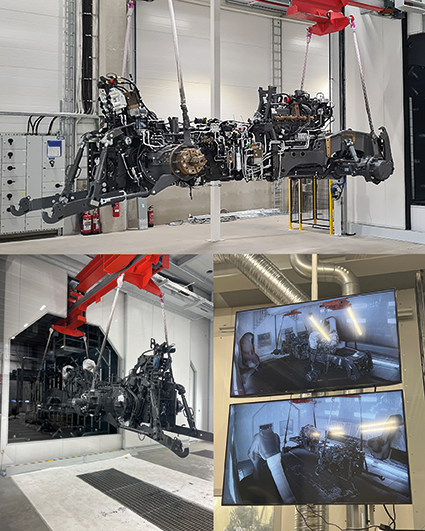Big new painting line at Valtra
New surface treatment plant has resulted in greater productivity and an enhanced working environment at Valtra
Finnish tractor manufacturer Valtra has achieved all its goals for the investment in a completely new surface treatment line from AABO-IDEAL: even better quality, a faster production process, greater capacity, and an improved working environment.
In 2022, Valtra started building a new production facility next to its existing tractor factory in Suolahti in Finland in order to address space problems and production flow challenges – as well as to upgrade its paint processes.
The new 2,000 m2 facility was completed in 2023 and now provides the framework for a state-of-the-art surface treatment plant from Danish AABO-IDEAL who, in partnership with Valtra, has purpose-built the plant to Valtra’s exact specifications for optimization of both production and the working environment.
Significant production improvements
Both the layout and the new surface treatment line have been designed to ensure room for conveyors, robots, employees – as well as the parts that need to be surface-treated. There is now even space for Valtra’s largest tractors – the Q series and S series – to undergo the surface treatment process.
“Previously, we had to surface treat the front and rear lifts of the Q series separately because the elements did not fit into the old surface treatment line. That is now no longer necessary, and we can really feel that in terms of our productivity,” says Mikko Santakallio, Valtra’s manager of Projects & Manufacturing Technology.
This is also one of the reasons why the tact time now can be faster from the normal 12 minutes to 8 minutes per unit. Combined with changes to production flow, it means that the factory is now able to surface treat 50% more tractors per day.
State-of-the-art surface treatment process
The close partnership between Valtra and AABO-IDEAL has also resulted in even better surface treatment quality.
“Customer expectations of quality have increased, and so have ours,” explains Project Leader Mikko Torvelainen from Valtra and continues: “That is why, as recommended by AABO-IDEAL, back in 2016 we chose a new type of nanoceramic surface treatment, and with this new significantly larger pretreatment system with subsequent blasting and drying, we have achieved even better results, so we are extremely pleased.”
Improved working environment and production flow
The new facility, which only houses the new surface treatment line, has also provided employees with an improved working environment. Previously, the surface treatment line was located in the middle of the large assembly building and that meant noise pollution, high humidity and significant problems with the heat from the line.
“This is a change that our employees appreciate very much,” explains Mikko Torvelainen and adds that the entire production line now has a better flow as the surface treatment system is no longer a bottleneck, but, on the contrary, acts as a buffer.
Additional energy-related benefits
The new surface treatment line has also enabled better energy efficiency.
In addition to the fact that Valtra has switched to district heating, explains Project Manager Mikko Torvelainen from Valtra, the new surface treatment line has a large and comprehensive ventilation system offering heat recovery and recirculation of air.
“This means that we have benefited from all the working environment improvements and have achieved improved energy efficiency,” he points out.
About AABO-IDEAL
The company was originally founded back in 1900, and today AABO-IDEAL Group is one of the world’s leading suppliers of surface treatment lines. AABO-IDEAL Group is headquartered in Denmark and has factories in Denmark, the Czech Republic and Sweden as well as sales and service offices in Germany, Poland, the Czech Republic, Sweden and Mexico. The group has a total of approx. 130 employees.
AABO-IDEAL Group focuses significantly on sustainability, and one of the company’s goals is to help customers reduce their energy consumption as well as CO2 emissions from surface treatment.

